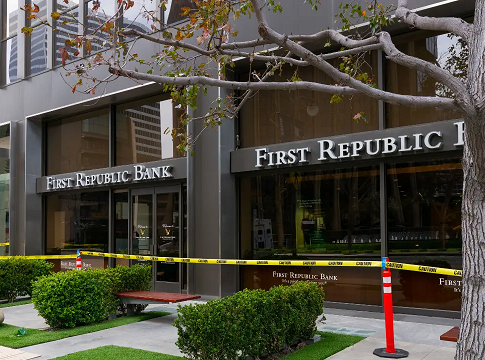The graveyard of dead banks proves that more Fed interest rate hikes will spark a severe downturn, Elon Musk said, claiming that data from his companies meant he had more real-time insight into the economy than “anyone ever.”
In a tweet on Sunday, the tech billionaire responded to an economic outlook from former US Treasury Secretary Larry Summers, who predicted that the US had a 70% chance of tipping into a recession within the next year.
“Mild recession is already here,” Musk replied. “Further rate hikes will trigger severe recession. Mark my words.”
In particular, Musk pointed to turmoil rocking the banking sector, with the most recent failure being First Republic Bank. That marks the latest bank to go under since March’s collapse of Silicon Valley Bank, which suffered a bank run after high interest rates hit the bank’s bond portfolio.
“It’s not like just the canary in the coal mine (SVB) died, one of the staunchest miners (Credit Suisse) died too & the cemetery is filling up fast!” Musk said, making the case that the banking failures are signaling major stress on the economy stemming from Fed rate hikes.
The Fed has raised interest rates by 475 basis points over the past year to tame inflation, a move that could easily overtighten the economy into a recession, experts warn.
Musk, for his part, has slammed the Fed’s interest rate hikes over 20 times in the past seven months. That’s because inflation is lower than what shows in the Fed’s data, he said, claiming its policy moves over the past year were “foolish” and responsible for Tesla’s $600 billion market drop in 2022.
Musk’s array of companies also gives him more insight into the state of the US economy, he argued.
“Between Tesla, Starlink & Twitter, I may have more real-time global economic data in one head than anyone ever,” he added in a following tweet.
Some strategists, meanwhile, have argued that inflation remains a top concern, meaning the Fed can’t afford to dial back interest rates anytime soon.
Markets are now pricing in an 89% chance the central bank raises rates another 25 basis points on Wednesday, according to the CME FedWatch tool, which would lift the fed funds rate to 5%-5.25%.
On the other hand, former Treasury Secretary Larry Summers said that the US has a 70% risk of tipping into a recession within the next year as stagflation is beginning to take shape in the economy.
In an interview with Bloomberg on Saturday, Summers pointed to worrisome inflation indicators, such as the Employment Cost Index, which rose 4.8% in the first quarter of 2022. Rising wages are a sign that inflation is still being felt in the economy, and could also worsen the trend and lead to a wage-price spiral, economists say.
“4% labor cost inflation just does not go with 2% underlying inflation,” Summers said, adding that inflation expectations could be beginning to become entrenched in the economy. “I think we’ve got a bit of a stagflationary problem developing.”
He added that inflation was now unlikely to get back to the Fed’s 2% long-run target without a recession, pegging the odds of a “meaningful slow down” over the next year at around 70%.
“That doesn’t mean the Fed’s objective should be to induce a slowdown, but if the Fed does what’s necessary to contain inflation, I think a slowdown is likely to come along,” Summers said.
His view echoes that of other experts, who say that the US will likely suffer from elevated inflation, or face a recession trying to get lower prices. That’s because central bankers have aggressively raised interest rates to tame inflation, but high rates could easily overtighten the economy into a downturn, and rates are already at their highest level since 2007.
Inflation, meanwhile, still looms well-above the Fed’s target at 5%, per the latest Consumer Price Index report.
Investors are expecting the central bank to hike rates another 25 basis-points this week, per the CME FedWatch tool, which would raise the Fed funds rate target to 5.00%-5.25%. Meanwhile, the bond market is pricing in a 58% chance of a downturn, according to the New York Fed’s Recession Probabilities model.


